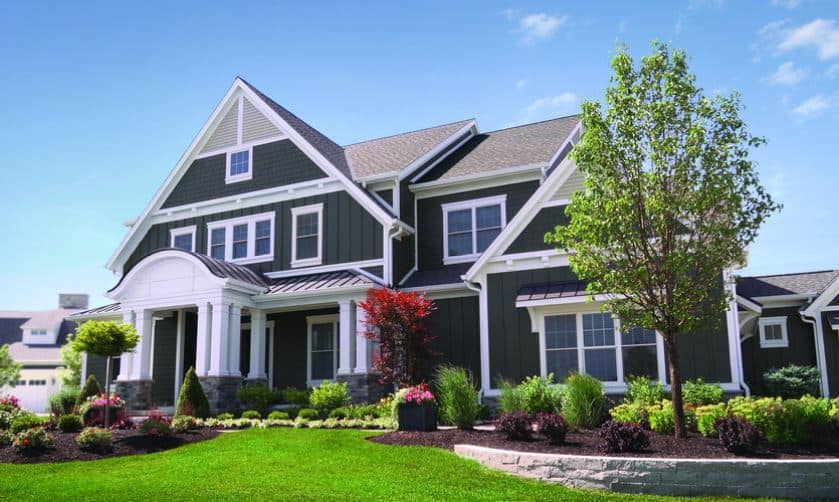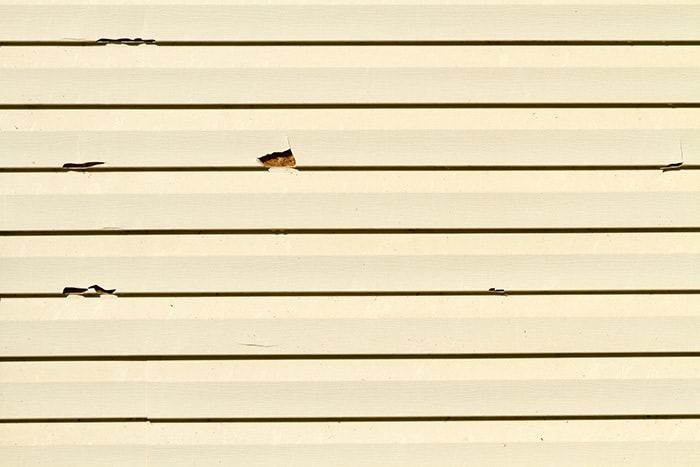During the past two years, many homeowners have been confined to their homes more than ever before. The pandemic has limited most of us from extracurricular activities, with many of us even working from home. It’s given us a new perspective on our home’s condition because we’ve been forced to look at all the details and notice areas that need improvement.
In fact, James Hardie Industries conducted a recent survey on the reasons for the home renovations boom in the past two years. The majority of respondents revealed that decisions on home renovations were largely based on their experience with extreme weather conditions or even the possibility of such conditions occurring in the future. Climate change is also a factor; homeowners want to protect their families from external conditions while they are inside their homes.
A study performed by the Leading Indicator of Remodeling Activity (LIRA) at Harvard University’s Joint Center for Housing Studies found that home improvement and maintenance spending increased in 2021 and projected it to remain that way through mid-2022.
“Strong increases in home sales activity, household incomes, and home equity levels are supporting a faster expansion of the home remodeling market over the coming year,” says Carlos Martín, Project Director of the Remodeling Futures Program at the Center. “As owners continue to navigate the ups and downs of the pandemic’s trajectory, the focus on home improvements for changing wants and needs remains in sharp relief.”
Most home improvement and renovation projects were done by millennials during the Covid era. The reasoning appears to be that the millennial generation has better jobs with higher pay and more of them are considering their homes as a permanent or at least a longer-term investment because of the tight housing market. The second largest group making these changes were homeowners who had children living in the home. Perhaps that was due to needs resulting from remote learning taking place in the home during the pandemic.
The results of these studies prove that today’s homeowners want solutions that will perform well for a longer period. People are more likely to spend more money upfront on home improvements and renovations that are more durable, longer-lasting, and of higher quality.
Siding Is a Valuable, Long-Term Investment

The siding on your home’s exterior is an important component of its curb appeal but there’s a lot more to it than that. It protects your home from the elements and insulates it so that you remain comfortable inside.
When homes are initially constructed, they will have some type of exterior siding on them. What type of siding depends on the builder or the first buyer, if they opt for upgrades. If you bought your home brand-new, you will know what type of siding it has and how old it is. If you moved into a home that was pre-owned, the documents that were provided to you should include the date when the siding was last installed or replaced and what type and brand was installed.
Knowing this information can help you decide if you need to replace the siding or if it will last for a while. The typical lifetime of siding, based on the materials and brand, falls into the following ranges. Pay attention to the caveats noted for each type of siding.
James Hardie Fiber Cement Siding: With proper professional installation, recommended use, and minimal maintenance, James Hardie siding will remain intact and aesthetically sound for a lifetime. It might be more expensive than some other materials, but its durability and longevity make it worth the initial investment. This premium siding includes a 30-year limited warranty. No other siding material manufacturer can offer this guarantee.
Vinyl Siding: Up to 60 years, depending on the brand and installation. Premium vinyl siding, like Mastic Home Exteriors or Revere Sovereign Select, is more durable and will last longer than lower quality vinyl siding. It requires little maintenance.
Metal Siding (aluminum, steel): Metal can last for decades; however, its baked-on finish will begin to fade and turn chalky. This material is less expensive than most other siding but the maintenance required is considerably more than most, except for wood.
Wood Siding: Can last for decades but the material is expensive and requires a lot of ongoing maintenance.
There are some signs to look for to determine if your siding needs replacing. If your current siding has faded, warped, chipped, cracked, or flaked, it can become an eyesore and ruin the aesthetics of your house. It can also allow water to seep in underneath the siding, causing mold to grow and rot to occur.
Any open areas can also present opportunities for critters (birds, squirrels, spiders, termites) to make their way inside your home where the temperature is more pleasant. At the very least, these invasions are annoying, but if termites get in, they can do lots of damage before you even know they’re there.
Why You Should Replace Your Siding

If you’ve noticed any of the previously mentioned signs of deterioration in your siding, it may be time to replace it. Let’s look at some very good reasons to consider it.
1. Increases Home Value
New siding is a definite plus when it’s time to sell. This is especially true if you opt for James Hardie Fiber Cement products. Homeowners can recover as much as 76 percent of the upfront cost, making fiber-cement siding the third best exterior renovation project for adding value at resale.
2. Protect Your Home
If you’ve noticed any signs of deterioration in your current siding, your home is at risk. Keep the structural integrity of your home in place by getting a high-quality siding replacement installed by professionals.
3. Stay Comfortable
If your siding is old, the insulation beneath it may not be the best. Good insulation puts an extra barrier in place that keeps the outside weather from seeping into your home. You’ll stay warmer in the winter and cooler in the summer.
4. Increase Energy Efficiency
With additional insulation provided by the new siding, your home’s indoor temperature will be maintained with less help from your HVAC system. You’ll spend less each month on heating and cooling your home, plus there’s less wear and tear on your system so it will last longer as well.
5. Repair Damage
When contractors are removing the old siding, they may notice structural damage caused by mold, leaks, dry rot, and other factors. This is an ideal time to repair this issues without disturbing the inside of your home.
6. You’re Planning on Selling the Home
Few buyers are looking for a fixer-upper. Curb appeal is very important to prospective buyers and siding that is deteriorating will not be very conducive getting attractive offers.
7. Less Maintenance Required
Depending on the type of siding you opt for, it will definitely reduce the effort to maintain it, at least for awhile. Wood siding will require repainting or restaining in around five years, but fiber cement or vinyl siding only need occasional cleaning to remain clean and attractive for decades.
Can You Repair Siding?

If your siding is damaged or in disrepair, you may be considering having it repaired or doing it yourself. Maybe a few planks are dented or cracked from an impact, hail has damaged only one side of the house, or some planks are faded. It’s certainly less expensive to replace a few boards or areas than having the whole house re-sided, right?
There are issues with this concept, however. Most contractors hesitate to do siding repair, since it’s tedious and they could be liable for any problems that arise. Plus, it can be difficult to match the older siding because the product is no longer available and the older siding has faded. That’s why most insurance companies will pay for the entire house to be re-sided, even if a covered event like hail only damages a few areas.
The age of your siding should also be considered. If it’s from the 80s, 90s, or even earlier, chances are it’s brittle and more susceptible to cracking. Repairing a few panels here and there can add up over time, and the older your siding is, the more repairs you can count on needing. You may not even know the brand name, pattern, and color of the original siding if you weren’t the homeowner when it was installed. So replacing a few boards would be a guessing game, possibly resulting in a mismatched look.
Get Your Siding Replaced by Experienced Professionals
If you’re ready to replace your home’s siding, don’t attempt to install it yourself. Hire a contractor who has the experience, knowledge, and reputation to do it right.
Banner Construction has been improving the look and protecting homes in the St. Louis area since 1993. We only install premium siding products, like James Hardie Fiber Cement and Mastic Home Exteriors and Revere Sovereign Select premium vinyl siding. We are certified as a James Hardie Elite Preferred contractor, which ensures proper installation and protects the warranty.
Contact us today for a free consultation and detailed estimate on your home’s siding replacement project. We look forward to working with you!
